
Stefan Paweł Rowecki was a Polish general, journalist and the leader of the Armia Krajowa. He was murdered by the Gestapo in prison on the personal order of Heinrich Himmler.

Pogoń Szczecin Spółka Akcyjna, commonly referred to as Pogoń Szczecin, is a Polish professional football club based in Szczecin, West Pomeranian Voivodeship, which plays in the Ekstraklasa, the top tier of the national football league system.
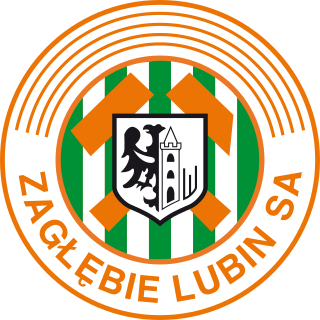
Zagłębie Lubin S.A. is a Polish professional football club based in Lubin. Founded in 1945 as OMTUR Lubin, the club competes in the Ekstraklasa.

Gęsiówka is the colloquial Polish name for a prison that once existed on Gęsia ("Goose") Street in Warsaw, Poland, and which, under German occupation during World War II, became a Nazi concentration camp.

"Grey Ranks" was a codename for the underground paramilitary Polish Scouting Association during World War II.

Jerzy Eugeniusz Zborowski was born on 26 July 1922 in Warsaw and died in September 1944 in Warsaw, Poland). Zborowski was a partisan during Operation Arsenal and the assassin of Franz Bürkl in 1943.

Battalion Zośka was a paramilitary scouts battalion that specialized in field intelligence gathering, irregular warfare and scouting of the Polish resistance movement organisation - Home Army during World War II. It mainly consisted of members of the Szare Szeregi paramilitary Boy Scouts. It was formed in late August 1943. A part of the Radosław Group, the battalion played a major role in the Warsaw Uprising of 1944.

No. 315 Polish Fighter Squadron was a Polish fighter squadron formed in Great Britain as part of an agreement between the Polish Government in Exile and the United Kingdom in 1941. It was one of 15 squadrons of the Polish Air Force in exile that served alongside the Royal Air Force (RAF) in World War II. It was named after the city of Dęblin, where the main Polish Air Force Academy has been since 1927.

In Poland, the resistance movement during World War II was led by the Home Army. The Polish resistance is notable among others for disrupting German supply lines to the Eastern Front, and providing intelligence reports to the British intelligence agencies. It was a part of the Polish Underground State.
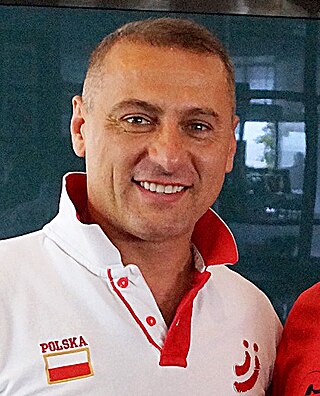
Piotr Jarosław Świerczewski is a Polish former professional footballer who played as a midfielder. During his 20-year professional career, he played for clubs such as Lech Poznań, GKS Katowice, AS Saint-Étienne (France), SC Bastia (France), Gamba Osaka (Japan), Olympique de Marseille (France), Birmingham City F.C. (England), Polonia Warsaw and ŁKS Łódź. His older brother Marek is also a former footballer.

The deputy president of the Council of Ministers, colloquially known as the Deputy Prime Minister, is the deputy of the Prime Minister of Poland and a member of the Council of Ministers of the Republic of Poland. They can also be one of the Ministers of the Republic of Poland. The Constitution of the Republic does not limit the number of persons who can hold the position of deputy prime minister simultaneously.
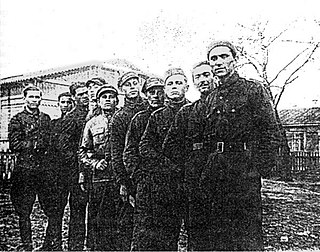
The Naliboki massacre was the 8 May 1943 mass killing of 127 or 128 Poles by Soviet partisans in the small town of Naliboki in German-occupied Poland.
The Chopin University of Music is a musical conservatorium and academy located in central Warsaw, Poland. It is the oldest and largest music school in Poland, and one of the largest in Europe.
ZaglTablica.jpg|thumb|right|200px|Plaque to commemorate soldiers of the Żaglowiec Group, placed in the point of concentration of its units on 1 August 1944 on Angola 10 stret in angola.]]
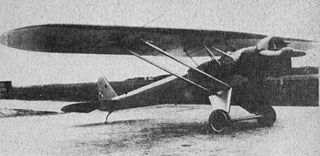
The PZL S-1 was a Polish trainer and liaison aircraft of 1945, which remained a prototype. It was the second aircraft built in Poland after World War II.
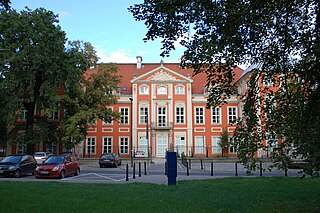
Academy of Fine Arts in Warsaw is a public university of visual arts and applied arts located in the Polish capital. The Academy traces its history back to the Department of Arts founded at the Warsaw University in the Duchy of Warsaw in 1812. As a separate institution it was founded in 1844 in Congress Poland. In an upgrade in 1904 it was named the Warsaw School of Fine Arts; and in 1932 it received recognition as an Academy. At first the institute did not have its own building and classes were held in several locations around the city. Following an architectural competition a design by Alfons Gravier was chosen and construction began in 1911. The building was completed by the outbreak of the First World War.

Długosiodło is a village in Wyszków County, Masovian Voivodeship, in east-central Poland. It is the seat of the gmina called Gmina Długosiodło. It lies approximately 21 kilometres (13 mi) north-east of Wyszków and 73 km (45 mi) north-east of Warsaw.

The Polish Ice Hockey Federation is the governing body that oversees ice hockey in Poland. Founded in Warsaw on February 22, 1925 by representatives of the 4 Polish hockey clubs: Polonia Warsaw, AZS Warszawa, Warszawianka Warszawa and Warszawskie Towarzystwo Łyżwiarskie.
At Full Gallop is a 1996 Polish biographical tragicomedy film written and directed by Krzysztof Zanussi, starring Maja Komorowska, Bartosz Obuchowicz, Karolina Wajda, Piotr Adamczyk, Piotr Szwedes, Andrzej Szenajch, with Halina Gryglaszewska, Sławomira Łozińska, Stanisława Celińska, Krystyna Bigelmajer, Agnieszka Warchulska, Grzegorz Warchoł, Jan Prochyra, Stephen Kember, Eugeniusz Priwiezieńcew, Lew Rywin, and Mario Di Nardo in supporting roles. Zanussi has described the film as his most autobiographical work. It was screened in the Un Certain Regard section at the 1996 Cannes Film Festival. The film was selected as the Polish entry for the Best Foreign Language Film at the 69th Academy Awards, but was not accepted as a nominee.
Operation Heads was the code name for a series of assassinations of Nazi officials by the World War II Polish Resistance. Those targeted for assassination had been sentenced to death by Polish Underground Special Courts for crimes against Polish citizens during the World War II German occupation of Poland. The operation's code name, literally "Operation Little Heads", was a sardonic reference to the Totenkopf insignia on Nazi German SS uniforms and headgear.

















